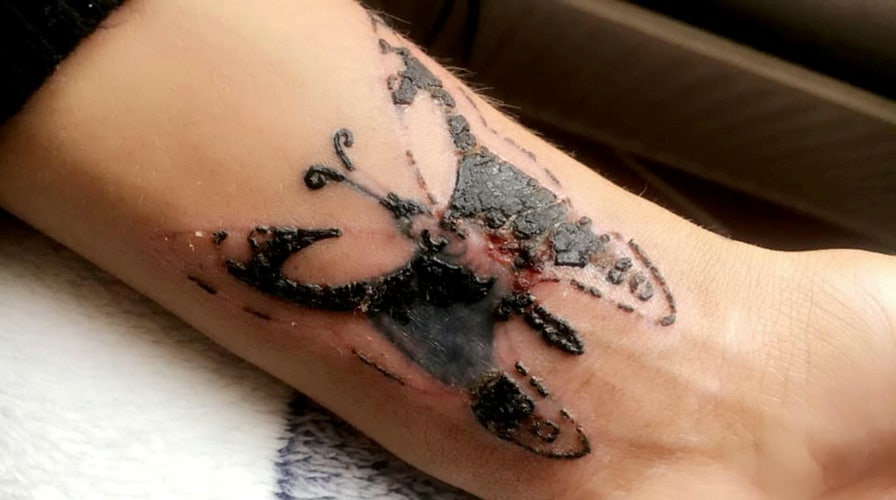
Laser tattoo removal is a popular method for getting rid of unwanted tattoos. While the procedure is generally safe, the healing process requires careful attention, as the skin is vulnerable to various complications, especially infections. Understanding the signs of infection after laser tattoo removal can help in seeking timely care and preventing further issues. Infection is one of the most common concerns post-procedure, and it’s essential to recognize its symptoms early. Signs of infection after laser tattoo removal (علامات الإصابة بعد إزالة الوشم بالليزر) typically manifest in different ways, and knowing what to look for can make all the difference in ensuring a smooth recovery.
Understanding the Healing Process of Laser Tattoo Removal:
After the laser treatment, the body goes into healing mode, and the skin reacts by forming scabs or blisters. These are part of the natural healing process, as the skin repairs itself after being exposed to intense laser energy. The healing duration can vary based on the individual and the size of the tattoo being removed. Most people experience redness, swelling, and some discomfort, which are expected responses. However, these symptoms usually subside within a few days. It's important to remember that while some irritation is normal, signs of infection after laser tattoo removal require closer observation.
Swelling and Redness Beyond the Usual
Swelling and redness around the treated area are common immediately after the procedure, but these symptoms should gradually diminish. If the swelling or redness increases after the first few days, it could indicate an infection. The swelling might feel warm to the touch, and the redness may spread further than the immediate area of the tattoo. If these symptoms worsen instead of improving, it's a signal that your body might be fighting an infection. Keeping track of any changes in appearance is vital for early detection.
Excessive Pain and Tenderness:
While some discomfort is expected after laser tattoo removal, persistent or intensifying pain can be a sign that something is wrong. If the treated area becomes increasingly painful to touch or if the pain doesn’t subside after a few days, it could indicate an infection. The tenderness around the tattoo should not feel overwhelming; if it does, it’s important to monitor the area for additional signs. Pain that doesn't improve could be linked to deeper tissue inflammation caused by bacteria, which requires attention.
Presence of Pus or Unusual Discharge:
One of the most obvious signs of infection after laser tattoo removal is the appearance of pus or unusual discharge. Healthy healing typically involves a dry, scabbed area with no oozing. If there is a thick, yellow or greenish discharge, it suggests that bacteria are present and that an infection may be forming. The area may also have a foul odor, which is another indicator that the wound is not healing properly. If this occurs, it's crucial to stop any self-treatment that may be aggravating the situation and take necessary precautions to manage the infection.
Fever or General Malaise:
In some cases, infections can cause systemic symptoms such as fever, chills, or a general feeling of being unwell. This usually indicates that the infection has spread or that your body is struggling to combat the issue. While a mild fever is normal after any medical procedure, a high fever or prolonged symptoms of malaise (such as fatigue or dizziness) after laser tattoo removal should raise concerns. If these signs persist, it’s important to seek further guidance.
Delayed Healing and Formation of Unusual Scabs:
While scabbing is part of the tattoo removal healing process, unusual or excessive scabbing can be a red flag for infection. If the scabs around the tattoo become larger than expected, break open, or are accompanied by intense pain, it may suggest that bacteria are hindering the healing process. Infections can slow down the natural recovery process, making the area take longer to heal than it would under normal circumstances. If scabs are not falling off or healing after a reasonable period, it’s important to reassess the area.
Changes in Skin Texture and Color:
During the healing process, the skin around the tattoo may undergo various changes, including slight discoloration and texture changes as it repairs. However, if the skin becomes increasingly red, darkens into a purple or black hue, or develops an unusual texture (such as excessive thickening or indentations), this could be a warning sign. Skin discoloration, especially if paired with other infection symptoms, may point to infection or even necrosis (tissue death). Monitoring these changes carefully can help prevent the issue from escalating.
Conclusion: Recognizing Early Infection Symptoms After Laser Tattoo Removal
The healing process following laser tattoo removal can vary from person to person, but knowing the signs of infection after laser tattoo removal is essential for ensuring the best outcome. If you notice excessive redness, swelling, pain, pus, fever, or other unusual symptoms, it’s important to act swiftly to avoid complications. By staying attentive to these early signs, you can ensure that your skin heals properly and without infection.













